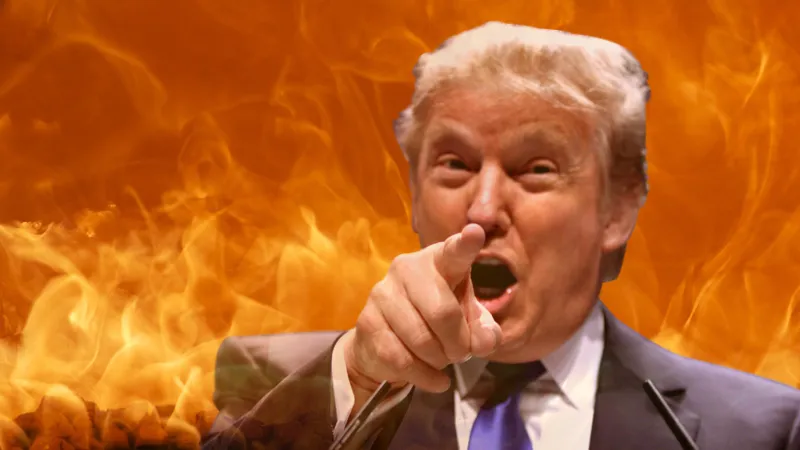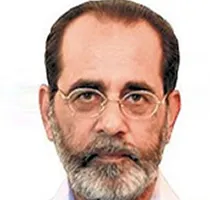Fifteen years ago, on the 11th day of the ninth month in 2001, the US mainland was attacked and a stunned world watched as history took a new turn. The two numbers came together, this time on the ninth day of the eleventh month in 2016 and once again, the world watched spellbound as Donald Trump was declared the President-elect of the US, wondering how it would change American engagement with the rest of the world. Clearly, there is something about the combination of 9 and 11 and the 21st century in the US that needs to be investigated by the numerologists!
Both events were a shock; in 2001, the aircraft slamming into the World Trade Centre were a bolt from the blue; and in 2016, while it is true that Mr. Trump was the Republican nominee, in terms of probability, his chances of winning had receded dramatically after the Access Hollywood tapes emerged in early October, even though these referred to a conversation in 2005, which he tried to play down as “locker room banter”.
Mainstream media endorsements were strongly in favour of Democratic candidate Hillary Clinton; in print media, the ratio was running at 57 to 1! In terms of TV advertisements at a national level, she enjoyed a definitive edge — the Clinton campaign numbered 3,21,748 spots while the Trump team was reduced to 99,141. US elections are often funding driven, and here too, the Clinton election fund contributions were in excess of $680 million compared to a war chest of $307 million for the Trump campaign. Given these odds, it is not surprising that the US think tanks, media and polling pundits gave a Clinton victory a high probability of over 80 per cent. Therefore, the Trump victory is no less of a shock than the 9/11 fifteen years ago.
A brutal campaign
As election campaigns go, this was the most brutal and polarising campaign ever seen in the US. Marred by scandals and name-calling, coloured by invective and character assassination, tarnished by corruption, sex, lies and videotape(s), this election has shaken the faith of the people in the American electoral process. It surpassed the spectacle of the 2000 election which had thrown up ludicrous images of poll enumerators looking at hanging chads in ballot papers in Florida to discern voters’ intentions, till the Supreme Court stopped the manual recount, took back the Florida electoral votes from Al Gore and confirmed George W. Bush as the 43rd President of the US. Then too, Mr. Gore had received a higher percentage in terms of popular votes, just as this time Ms. Clinton is around a percentage point ahead of Mr. Trump.
This year’s was a campaign that demolished the idea of the innately decent and wise aam aadmi, at least in the aggregate. The irony is that even though during the campaign Mr. Trump came across as arrogant and vain, used offensive language for women, the disabled, Hiics and Muslims, and was unable to present coherent policy programmes in his speeches or in the presidential debates, he felt little need to apologise for his gaffes, revelling in his political incorrectness. He fractured the Republican Party whose nomination he had secured in a bruising primary.
Nothing mattered because he was convinced that he had tapped into a deep vein of resentment running through US society that would propel him to the White House. In fact, he could not have changed his campaign style and kept his loyalists with him. He was an unlikely candidate for the middle-aged, worried, white American male, scared of and unprepared for the future.
Mr. Trump symbolises the moneyed elite, an inheritor of family wealth (his father was estimated to be worth more than $200 million in the 1950s), a real estate mogul who schmoozed with the bold and the beautiful, the owner of the Miss Universe pageant (1996-2015), a reality TV star, thrice married, living in a three-storey penthouse apartment on the Fifth Avenue in Manhattan, partying and jetting to his various palaces and casinos. How did this group adopt someone like Mr. Trump as their representative?
Divided states of America
Mr. Trump’s skill was to overcome his background and invoke a mix of populism and majoritarian nationalism. It did not matter if he sounded sexist, xenophobic or even hateful. He was guessing (and rightly, as it turns out) that this would serve to energise and cement his support base. Mr. Trump is not the first politician to take recourse to populism.
In his fight for the Democratic nomination, Senator Bernie Sanders also took recourse to populism, of a different kind. He too wanted to restore American democracy but by increasing welfare through progressive economic tax reform that would impact the rich. It was a populism that had a strand of liberalism woven into it.
Mr. Trump replaced the ‘liberal’ strand with a narrowly defined ‘nationalism’, which appealed to his support base that was scared; scared of immigrants, of globalisation, of new technologies; scared that in their old age, their life would be less certain than it had been for their parents. Mr. Trump’s support base had been Bill Clinton’s support base (remember –‘it’s the economy, stupid’) but Ms. Clinton could no longer claim that as hers, and in the final analysis, she remained unable to inspire and energise the African-Americans, Hiics, women and the immigrant communities that would have helped her break the glass ceiling.
Today, the US is a society in turmoil. A look at the electoral map shows the extent of the divide. Barring a handful of exceptions like Illinois and New Mexico, it is the States on both the east and west coasts that have voted staunchly for Ms. Clinton. California, at $2.46 trillion, is the sixth-largest economy in the world, having overtaken France. On the east coast, New York State boasts of the 12th largest global economy at $1.44 trillion (and third among the States within the US, after California and Texas). Add to it the other half a dozen States on the two coasts like New Jersey, Massachusetts, Virginia, Maryland, Washington and Oregon, and it is clear that these coastal economies account for nearly half of America’s $18-trillion GDP. These States play host to large immigrant populations, support globalisation, invest in R&D and are in the forefront of cutting-edge technological developments.
Waiting to happen
While every election is local, the Trump phenomenon reflects a trend which is straining the Western, liberal, international order that emerged after World War II, supported by the US. Since then, political trends in Western democracies have reflected certain convergences. For the first quarter century, the focus was on economic growth, creation of international institutions, expansion of social security and welfare systems, prevention of conflict in Europe and finally, a convergence around the political middle.
The oil price hike and the inflationary trends in the 1970s led to a rightward shift in western politics. President Ronald Reagan (Republican) in the US and Prime Minister Margaret Thatcher (Conservative) in the UK reflected this shift. In Germany, Chancellor Helmut Kohl (Christian Democratic Union) was in office for an unprecedented 16-year term, from 1982 to 1998.
The successful unification of Germany contributed to his long innings. The French enjoy being different and though President Francois Mitterrand (Socialist) was bucking the trend from 1981 to 1995, from the mid-1980s, France enjoyed cohabitation with a Right-of-Centre Prime Minister in Jacques Chirac who eventually succeeded Mitterrand as President.
The 1990s saw the growth of the new Left. In the US, President Clinton (Democrat) came to power in 1992 and Tony Blair (Labour) was PM in the UK from 1997 to 2007. Both shifted the politics and the economics to the Right-of-Centre. In Germany, Gerhard Schroeder (Social Democratic Party) replaced Mr. Kohl. France remained the odd man out with President Chirac continuing till 2007 and it is only in 2012 that a Socialist President Francois Hollande regained the Elysee. By this time, the art of finding the political middle had started coming under strain, in the West.
Post the Iraq invasion and the 2008 financial crisis that gripped first the US with the sub-prime mortgages and then the Eurozone, there has been a persistent questioning of existing political structures and governance systems. Four phenomena have added to the uncertainties.
Ageing of populations in a number of Western countries, rising immigration being seen as a threat, growing inequality particularly in the Anglo-Saxon world as vividly brought out by French economist Thomas Piketty, and finally, a diffusion of authority under the twin onslaughts of globalisation and the technologies spawned by the Internet
Like Brexit, the Trump phenomenon is a sign that the centre of gravity of political discourse is shifting away from the predictable and orderly towards fragmentation and disorder. Within the US, the Trump voter is part of the shrinking share of the population but because it sees itself as threatened, it is ready to come out, vote and assert itself.
The Trump phenomenon will play out in Austrian, Dutch, French and German elections soon and the prospects of uncertainty are only going to grow in the years to come as politicians in democracies (and elsewhere) increasingly take recourse to the rising tides of nationalism.
This commentary originally appeared in The Hindu.
The views expressed above belong to the author(s). ORF research and analyses now available on Telegram! Click here to access our curated content — blogs, longforms and interviews.




 PREV
PREV


